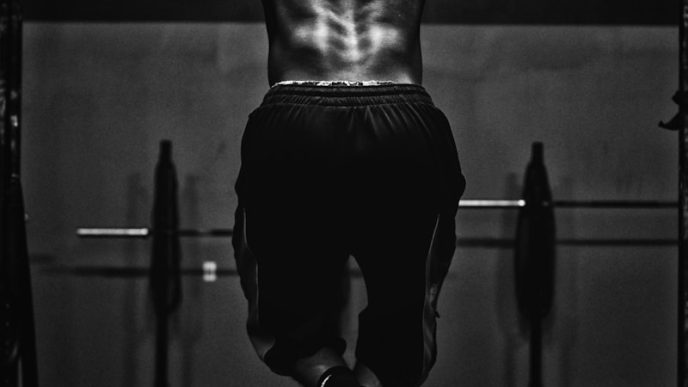Cryptocurrency mining has evolved rapidly over the last decade, going from a small-scale hobby for tech enthusiasts to an industrial-scale venture that demands substantial investment and careful planning. With the cryptocurrency market gaining more momentum, the need to optimise every aspect of a mining operation has never been more critical. For miners looking to enhance efficiency and maximise profitability, professional hosting services have become a crucial piece of the puzzle.
The demand for professional crypto hosting has surged as miners strive to streamline operations, cut costs, and improve performance. Hosting services offer more than just space and power; they provide miners with the infrastructure, security, and expertise needed to mine efficiently and effectively. One name that’s made a significant impact in this sector is Miner Host by OBM, known for its tailored hosting services designed to help miners get the most out of their rigs.
This article will explore the key benefits of professional hosting and how it can significantly boost mining performance, paving the way for increased profits and long-term success.
Why Professional Hosting Matters in Crypto Mining
Mining cryptocurrency is a resource-intensive process that requires careful management of equipment, power, and connectivity. While it may be tempting to set up a mining rig at home or in a basic facility, professional hosting offers advantages that can dramatically enhance performance. A host provides a dedicated environment tailored specifically to the needs of crypto miners, complete with optimised infrastructure, power management, cooling, and security.
Professional hosting eliminates the challenges that come with setting up your own mining operation. From ensuring a stable power supply to maintaining the right temperature for your hardware, a good host takes care of the critical operational factors so you can focus on strategy and expansion.
Crypto Hosting and Efficiency: A Match Made for Miners
Efficiency is the cornerstone of any successful mining operation, and this is where crypto hosting comes in. At its core, crypto hosting is about maximising the performance of your mining equipment while minimising operational costs. This includes providing cost-effective power solutions, ensuring seamless internet connectivity, and maintaining the right environment for your rigs to operate without interruptions or overheating.
Efficiency isn’t just about squeezing the most performance out of your equipment – it’s about creating a balanced ecosystem where every aspect of your mining operation works in harmony. The right hosting provider will help you achieve this by offering optimised facilities that enable you to run your rigs at full capacity while keeping costs under control.
How Infrastructure Affects Mining Performance
The infrastructure of your hosting provider is a major determinant of how well your mining rigs will perform. A well-designed infrastructure ensures that your equipment receives stable power, consistent cooling, and uninterrupted network access. This is particularly important given that mining rigs are highly sensitive to environmental conditions and require a controlled setting to function at their best.
Professional hosting services use purpose-built data centres designed specifically for mining. These facilities are equipped with high-speed internet, robust power supplies with redundancies to prevent downtime, and efficient cooling systems. By creating the optimal environment for your mining equipment, a good host enables your rigs to achieve maximum performance and lifespan.
Cost Management Through Energy Efficiency
One of the primary benefits of professional hosting services is cost management through energy efficiency. Power consumption is one of the largest expenses in mining, and professional hosts understand the need to keep this cost as low as possible while maintaining high-performance output.
Many hosting providers have access to low-cost electricity, often through renewable energy sources like hydroelectric, wind, or solar power. By harnessing these energy sources and utilising advanced power management strategies, hosting providers can reduce electricity costs and improve your bottom line. Moreover, efficient power usage not only reduces costs but also extends the life of your mining equipment by preventing unnecessary strain.
The Vital Role of Cooling Systems in Mining Operations
Crypto mining generates a significant amount of heat, which, if not managed properly, can damage equipment and reduce efficiency. This makes cooling a critical aspect of any mining operation, and it’s an area where professional hosting providers truly excel.
Advanced cooling systems, such as liquid cooling, HVAC systems, or optimised airflow designs, are used to maintain a stable operating temperature for your rigs. By keeping the equipment cool, the host ensures that it operates at its optimal hash rate without overheating or slowing down. This not only improves performance but also reduces wear and tear, resulting in a longer lifespan for your hardware.
Real-Time Monitoring and Transparency: Know Your Operation
Having real-time data at your fingertips is essential for successful mining. The best professional hosting providers offer comprehensive monitoring tools and dashboards that provide live updates on your equipment’s performance, including hash rates, power consumption, and uptime.
With this information readily available, you can make informed decisions about your mining operation, troubleshoot issues quickly, and optimise settings to boost efficiency. Transparency from your hosting provider also allows you to stay fully informed about any maintenance, changes in electricity usage, or other factors that could affect your profitability.
Security: Protecting Your Mining Assets
Security is a non-negotiable aspect of mining, particularly given the value of the equipment and the potential profitability of the operation. Professional hosting services provide multi-layered security measures to protect your mining assets from theft, damage, or cyberattacks.
Physical security is provided through on-site surveillance, biometric access controls, and secure facility designs. Digital security measures include encrypted data channels, DDoS protection, and network monitoring to prevent unauthorised access. By investing in top-tier security, hosting providers ensure that your equipment and digital assets are well-protected at all times.
The Scalability and Flexibility of Hosting Services
Professional hosting services offer scalability and flexibility that you simply can’t achieve with a home-based or small-scale operation. As the cryptocurrency market evolves, the need to scale your mining capacity will arise, whether by adding more rigs or upgrading to more efficient hardware.
A hosting provider that understands the demands of scaling will allow you to grow your operation seamlessly, providing additional space, power, and infrastructure as needed. This flexibility ensures that your hosting solution can adapt to changes in the market, keeping you profitable and ahead of the competition.
Customer Support and Troubleshooting
Even with the best equipment and hosting facilities, issues can arise that need prompt resolution. A hosting provider that offers responsive and knowledgeable customer support can make all the difference in ensuring your operation runs smoothly. Whether you’re facing downtime, technical problems, or need advice on optimising your mining setup, reliable support is crucial.
The best providers will have 24/7 support available through multiple channels, including live chat, phone, and email. Quick and efficient troubleshooting can significantly minimise any potential losses due to equipment failure or other operational issues.
The Unique Benefits of Miner Host by OBM
Miner Host by OBM stands out as a leading example of what a professional hosting provider should offer to serious miners. With a focus on transparency, customisation, and efficiency, Miner Host by OBM provides tailored solutions that cater to both small and large-scale miners looking to optimise their operations. Their hosting facilities are equipped with advanced cooling systems, efficient power management, and real-time monitoring tools designed to help miners achieve peak performance.
With their customer-centric approach and industry experience, Miner Host by OBM not only ensures that your mining rigs are well-supported but also empowers you to enhance your profitability through expert guidance and superior infrastructure.
Strategic Partnerships for Optimal Mining Performance
Building a successful mining operation is not just about having the right equipment – it’s about creating the right partnerships. By choosing a hosting provider that understands the needs of miners and offers tailored solutions, you position yourself to achieve the best possible performance from your rigs.
From securing cost-effective power and optimising cooling to providing transparent data and reliable support, professional hosting services play a pivotal role in your mining journey. The right host becomes an extension of your team, working to ensure that your operation is efficient, profitable, and adaptable to market changes.
Shaping Your Mining Journey
In the world of crypto mining, the competition is fierce, and efficiency is the key to success. By leveraging the benefits of professional hosting services, you can maximise your rigs’ performance, reduce costs, and improve your overall profitability. Whether you’re scaling up a small operation or managing a large mining farm, finding the right hosting partner is a game-changer.
Embrace the advantages that professional hosting offers – from enhanced security and transparent monitoring to scalability and expert support. Your mining journey deserves the best, and with the right hosting service, the path to optimised performance and greater returns is clear. Let your mining operations thrive, and mine smarter, not harder!












